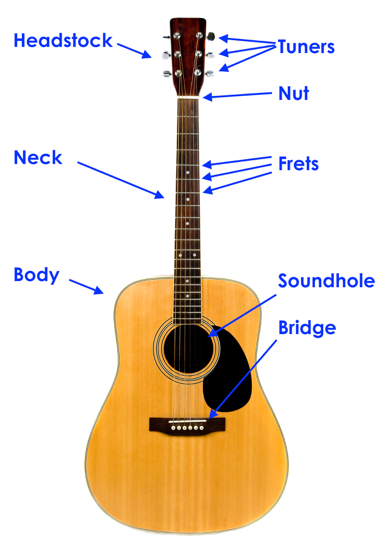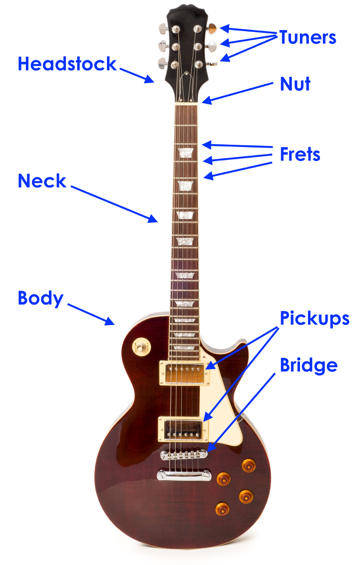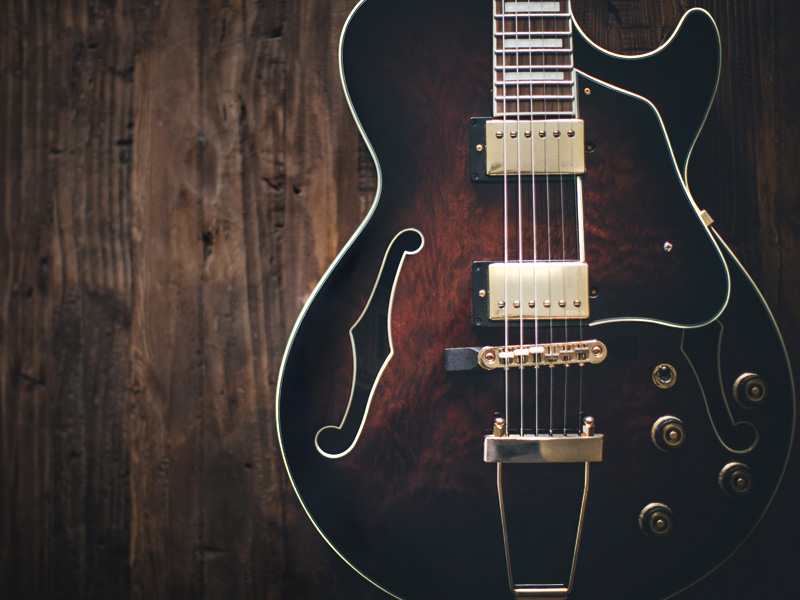
There are many different guitars styles; electric, steel string acoustic, classical, hollow body, thin-line, etc. One thing they all have in common is their general body structure. So, no matter what kind of guitar you play, there will be basic parts you need to know. To get comfortable with the guitar and begin to learn, it will be in your best interest to learn about the purpose and functional aspects of each part of the guitar. This will also help you troubleshoot when problems come up with your instrument.
The Body

The largest and most noticeable part of the guitar is called the body. It comes in many shapes and sizes, but is almost always curved and made of wood. The curves have more than just an aesthetic appeal. They are there to rest the guitar on your leg while you play. If it’s an acoustic and has a sound hole, this is to let the sound produced by the vibration of the strings to enter into the guitar and amplify back out. If you have an electric, there will be pickups which pick up the sound and send it to an external amplifier with speakers. The final important part to know is the bridge which the strings are attached to on the body.
The body is what differs the most in appearance and function when comparing guitars. The electric guitar body is much thinner in width than acoustic. Electric guitars also aren’t as dependent on the body being an amplifier for the strings. This is why electric guitars come in such a large variety of shapes and sizes.
The Neck
The next most obvious part of the guitar is the neck. The neck is the long piece of wood that is attached to the body. The strings run parallel to the neck along what is called the fretboard. The fretboard contains frets which change the pitch of the strings when the strings are pressed down. The frets are the metal strips on the fretboard. The strings then go to the nut which is at the end of the fretboard/neck.
The Headstock
This is final obvious piece of the guitar. The headstock is the section attached to the end of the neck. It contains tuning pegs or knobs so you can tune the strings to specific pitches. The strings wrap around poles which hold the strings in place. There are some guitars without headstocks called headless guitars, but these are not nearly as common.
Now you are familiar with all the basic parts and the language used to describe them. You can feel more confident when talking with others about the guitar and begin learning even more.
About The Author: Ryan Duke is a professional musician and owner of Seattle Guitar Mentor, a guitar school providing guitar lessons in Franklin, TN.

